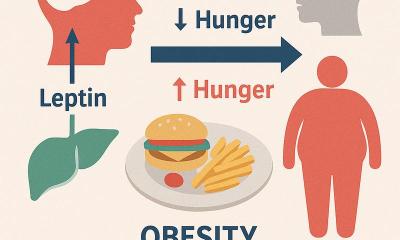Diabetes I
Diabetology news
The focus of the 2015 Diabetes Congress held in Berlin this May was ‘Personalised diabetes treatment: innovative – individual – sustained’. EH reports on points aired during the supporting press briefing.
Report: Bettina Döbereiner

Sustainability of diabetes treatment –To date, scientific studies have adequately proved that early protection and thus ideally the supply of insulin-producing beta cells can, in some cases, avoid the manifestation of diabetes in patients with pre-diabetes or the first manifestation of Type 2 diabetes, said Professor Norbert Stefan, President of the Diabetes Congress, but, he added, ‘above all it can significantly improve the course of the disease over a period of ten years. Reason? The body’s own insulin production is maintained for longer.’
Thus he puts forward the case for early treatment and aggressive blood glucose reduction. Stefan recommends a target blood glucose level of around 100 mg/dl (HbA1c 5.6%), which he achieves with the help of the drug metformin. He decidedly advises against the use of so-called sulphonylureas, because ‘They “squeeze” the pancreatic cells dry, making them produce ad infinitum and this eventually leads to a long term loss of function, which is therefore not sustainable.’
This preventive strategy is only suitable for non-obese patients. Bariatric surgery to treat obese patients, particularly if they do not respond to other treatments, has been hotly debated recently. Several studies have shown that, within two years, 60-80% of obese diabetics who have undergone this surgery experience a diabetes remission. However, the probability of remission after ten years is only 35%, according to Professor Dirk Müller-Wieland, press officer at the German Diabetes Association (DDG) and Senior Consultant at the Department of General Internal Medicine at the Asklepios Clinic St. Georg in Hamburg. He emphasised that results also suggest that, particularly in cases that are very difficult to treat, the diabetes remission rate after ten years is only 10-15%.
Müller Wieland therefore demands that this option as a secondary indication for obese diabetics should only be considered after careful, individual clarification and that, in view of possible side effects such as changes in gastrointestinal motility and long-term consequences (key word increased suicidal tendencies), should only be carried out with appropriate, structured preparation and aftercare. Independent of this gastric surgery, where organs are partially and irreversibly removed, there are currently three further treatment concepts that try to utilise the same mode of action – which is still not understood – but which are less invasive than the surgical reduction of stomach size. Up to now, all studies show that probably the upper part of the small intestine and the duodenum are responsible.
Müller-Wieland mentioned three different, promising treatment concepts. In the first, an impermeable sleeve, also called ‘gastric condom’, is inserted, preventing food coming into direct contact with the intestinal wall when passing through. The second concept consists of a selective ablation of the mucosa to partially disable it (see EH article on page 1 – duodenum ablation).
With the third concept, gastrointestinal motility is changed via electric modulation through interaction with the vegetative nervous system. Initial experimental data for these three approaches confirm their success and, said Müller-Wieland, point toward the development of ‘Interventional Diabetology’. However, we must first wait for the results of larger, more meaningful studies.
Soon, the so-called closed-loop-systems may help to further customise treatment, particularly for Type 1 diabetics, and notably to avoid the often underestimated hypoglycaemias, which frequently occur during the night. For this procedure, the currently available continuous blood glucose monitoring systems, which are implanted subcutaneously into the adipose tissue where they measure the glucose in the interstitial fluid (and transmit data to a mobile telephone), are to be combined with insulin pumps – also already available – through a complex algorithm in such a way that the system automatically and continuously calculates and dispenses the amount of insulin required.
‘We believe that the first closed-loop blood glucose monitoring systems will be available within the next two, maximally three years,’ said Professor Thomas Forst, Director at the Department of Medical Science at the Profil Institute for Metabolic Research in Neuss, Germany. Clinical studies, but also tests under daily life conditions in adults and children with diabetes type 1, have shown that the utilisation of these systems can reduce both hyper and hypoglycaemias considerably, particularly at night, he said.
Forst went one step further: ‘We’re already on the brink of the availability of hormonal closed loop systems,’ he said. The first systems of this kind are currently being trialled. They would make it possible not only to activate insulin supply when blood glucose levels are too high, but also to stop the supply of insulin if hypoglycaemia is imminent, activating the supply of glucagon instead.
22.06.2015











